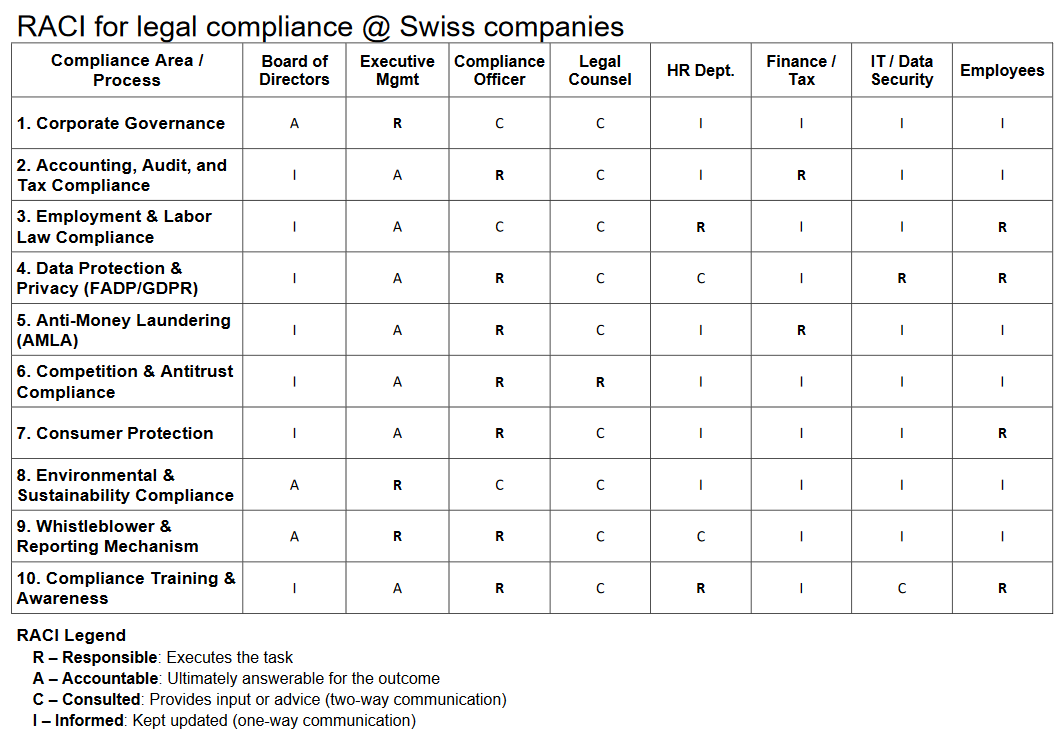RACI for legal compliance @ Swiss companies

This RACI matrix assigns clear roles and responsibilities by identifying who is Responsible, Accountable, Consulted and Informed for each task or decision within a process. It can be used as part of your compliance governance framework to ensure your company systematically fulfills all legal obligations in Switzerland, reduces legal risk and maintains trust with stakeholders while supporting operational efficiency and governance.
Risk Prevention: Proactively identify and manage compliance risks (e.g. data breaches, tax fraud, etc.)
Transparency. Ensure internal and external visibility into compliance status
Accountability: Define clear roles and responsibilities for compliance tasks
Documentation: Create audit trails and legal evidence of due diligence
Efficiency: Automate and streamline compliance activities across departments
Adaptability: Respond quickly to changes in laws, especially in dynamic areas like AML or data protection
A structured legal compliance framework is essential for Swiss companies, particularly when expatriates hold executive or board positions such as members of the Board of Directors e.g. at big banks (like the collapsed Credit Suisse). These individuals may not be fully familiar with Swiss legal and regulatory requirements, which can lead to gaps in oversight and governance.
This challenge is not unique to Switzerland; it affects expatriates in senior roles across jurisdictions, underscoring the need for clear compliance processes to ensure accountability and alignment with local laws.
The main stakeholders involved or affected by a company's legal compliance are as follows:
Internal Stakeholders
Board of Directors: Ultimate oversight of legal risks and compliance strategy
Executive Management: Sets tone at the top and allocates resources for compliance
Compliance Officer: Designs, monitors, and enforces the compliance process
Legal Counsel: Interprets laws and provides guidance on compliance obligations
HR Department: Ensures labor law and data protection compliance
Finance & Tax Teams: Responsible for audit, accounting, and tax law compliance
IT/Data Security: Responsible for audit, accounting, and tax law compliance
Employees: Must follow internal policies and report breaches
External Stakeholders
Regulatory Authorities: e.g. FINMA, SECO, cantonal tax offices, Data Protection Office
Auditors: Assess legal and financial compliance
Shareholders/Investors: Expect legal risk to be controlled and disclosed
Clients/Customers: Rely on privacy, ethical treatment and lawful conduct
Suppliers/Partners: Must meet the company’s compliance standards
Whistleblowers/Ombuds: Report internal misconduct or non-compliance
Money Laundering Reporting Office SWI: Receives reports of suspicious financial activity (AML-related)

